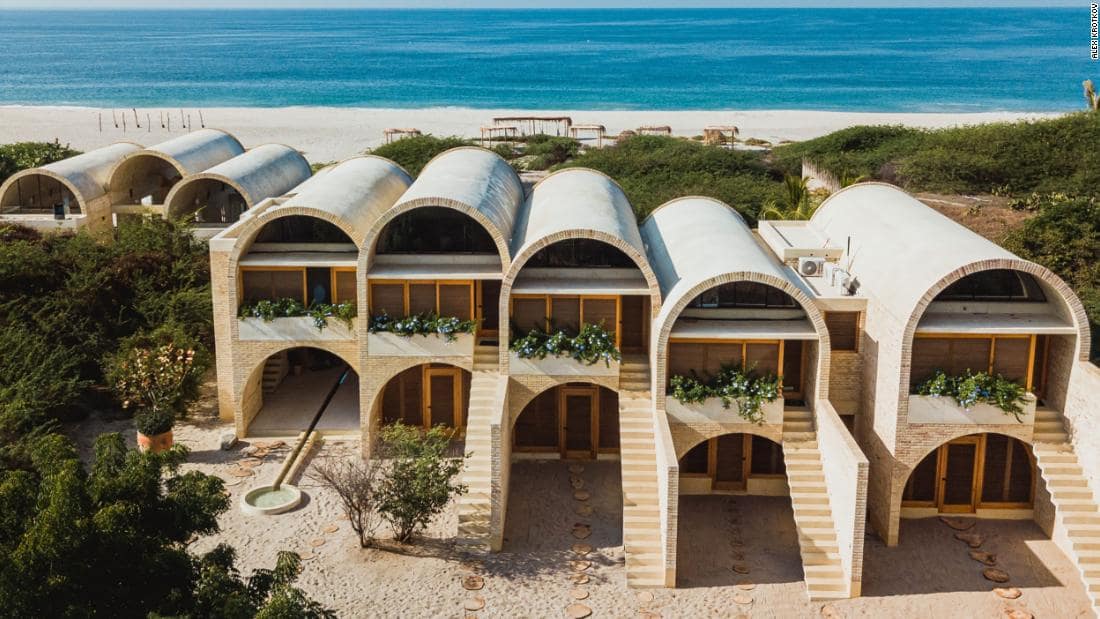Editor’s Note — Sign up for Unlocking the World, CNN Travel’s weekly newsletter. Get news about destinations opening and closing, inspiration for future adventures, plus the latest in aviation, food and drink,
CNN
—
Hong Kong is widely considered one of the most challenging cities in the world to operate a restaurant – a roiling cauldron of changing tastes, cleaver-sharp competition and unsavory economics.
Right at the heart of its culinary world, with connections to at least half of its hottest tables, is publicist Geoffrey Wu.
Wu and his 10-year-old consultancy firm The Forks and Spoons work with some of the most decorated restaurants and bars in town, such as the two-Michelin starred TATE Dining Room and Ando, one of the most sought-after reservations in town.
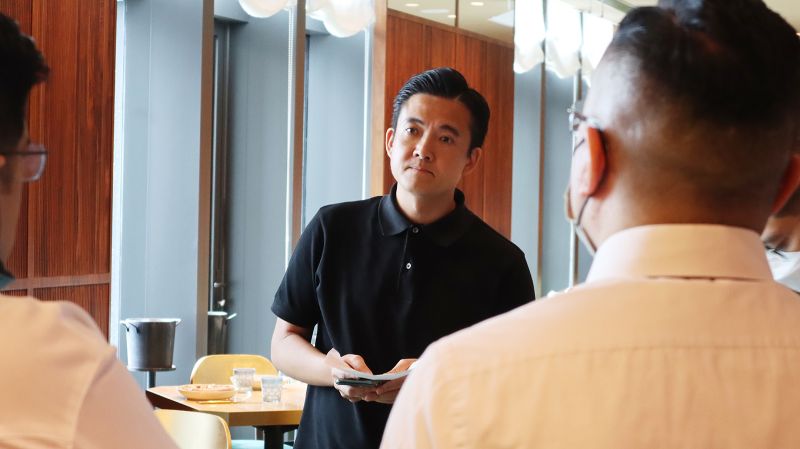
“I wouldn’t say we’re better at our job than other people. I’d say we’re different,” he tells CNN Travel in The Baker and The Bottleman, a new casual bakery and natural wine bar by celebrity British chef Simon Rogan, where he’s agreed to spill some of the secrets of Hong Kong’s dining scene.
After being expelled from the University of Science and Technology in Hong Kong for “skipping too many classes to play cards at McDonald’s,” Wu joined Amber, the famed French restaurant under the helm of Richard Ekkebus, as operations staff in 2005.
Over the next few years he took on various marketing roles for different companies – but always found himself back in the food and beverage industry. In 2012, he opened his F&B consultancy firm.
Wu isn’t your typical food and beverage publicist. He isn’t congenial. He’s known for occasionally yelling at clients for making a mistake, or members of the media he feels haven’t done their research.
“I am not afraid to speak up – people know that for sure. Sometimes you need a consultant who is straightforward about things that must be fixed. We aren’t here to massage your ego. We are here for the results. We are here to win,” says Wu, sounding more like a football coach than a PR professional.
“If I wanted to please everyone, I’d go sell ice cream. Luckily, most of my clients understand.”
Among these clients is Yenn Wong, founder and chief executive officer of JIA, a restaurant group behind popular award-winning Hong Kong eateries like Mono and Duddell’s.
“The Forks and Spoons understand and personalize the needs of each concept and is always staying very current with the relevant strategies to ensure we as clients get the most publicity to our target audience, which ultimately delivers positive revenue growth,” Wong tells CNN Travel.
‘The most cutthroat F&B market in the world’
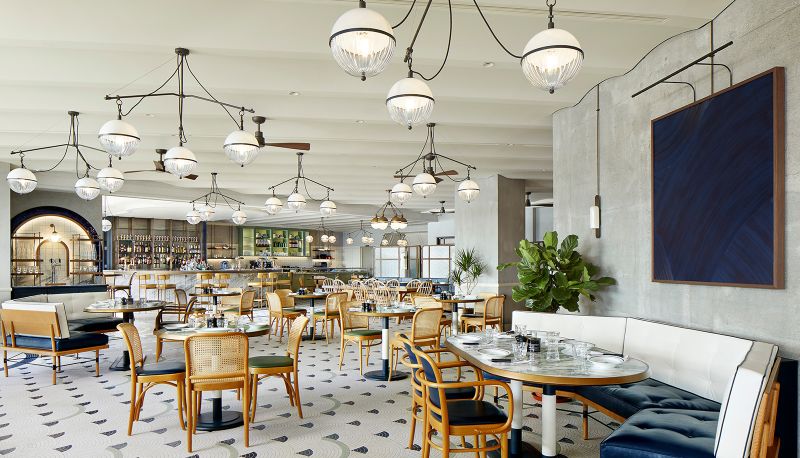
One of the important duties for a F&B publicist is to be physically present at a restaurant, according to Wu. He is either tinkering with menus, sampling new dishes or simply meeting with clients.
It could be anything from translating the restaurant’s a la carte menu from Chinese into English to working with chefs on choosing dishes for a tasting menu, “so you can see what’s happening and let the staff know that you care,” says Wu.
For instance, later that day, he says he’s having a trial lunch at Bluhouse, a new casual Italian dining concept at the Rosewood Hotel in Kowloon.
“At a tasting, we’ll look at everything – taste, presentation and temperature of the food. We also look at furniture, operation flow, pricing, etc.,” he says. “No new restaurant is ever perfect, but let’s try to minimize the error.
“We have only worked with clients in Asia – Hong Kong, Macao, Maldives, etc – but I really believe that Hong Kong is the most cutthroat food and beverage market in the world.”
His claim isn’t baseless.
Getting the opening right is essential in Hong Kong due to its competitiveness.
The city is frequently named as the world’s most expensive rental location. And Hong Kong residents are some of – if not the – biggest spenders on dining out, especially pre-Covid. Food imports are extremely expensive.
According to a recent government survey, Hong Kong households spent an average of HKD60,539 (or US$7,761) on meals out and takeaway food in the year of 2019 to 2020 – Hong Kong suffered from half a year of social unrest in 2019 before the outbreak of Covid in 2020
That was about double what New York-area household spent on average on food away from home during the same year.
“It’s such a condensed market,” says Wu.
“People always talk. Hong Kong customers are also very knowledgeable. If you don’t get it right from the get-go, you have to revamp many things. The question is – will the customers give you a second chance? There are so many choices that chances are they’d go somewhere else.
“So to build a successful restaurant, it’s important to make sure the opening is a strong one. With good word of mouth then businesses will come. It’s that simple.”
Case in point: Bluhouse. It opened in June and dinner reservations are full through October and November at the time of the writing.
Hong Kong’s F&B industry has evolved rapidly in the last decade, thanks in part to the arrival of Michelin Guide in 2009 as well as the rise of social media and the local food community.
Chefs in Hong Kong have experienced a shift in their roles.
“Some 20 years ago, chefs mostly just cooked and served food,” says Wu.
“Now in 2022, there is also this thing called relationship building. Chefs have to show their faces. They have to touch the tables and to take pictures with guests. The job of a chef is much bigger than before. It all goes back to a need for human connection. Customers, media, influencers, bloggers – everyone wants to have a human connection.”
And it just makes good business sense – guests are more likely to return to a restaurant where they have established a relationship with the chef.
The problem, of course, is that chatting with diners doesn’t come naturally to all chefs. That’s where Wu comes in.
“We just encourage and encourage and encourage them,” he says.
He cites Manav Tuli of modern Indian restaurant Chaat – which is also located at the Rosewood – as a success story. Chaat opened in 2020 and won its first Michelin star two years later.
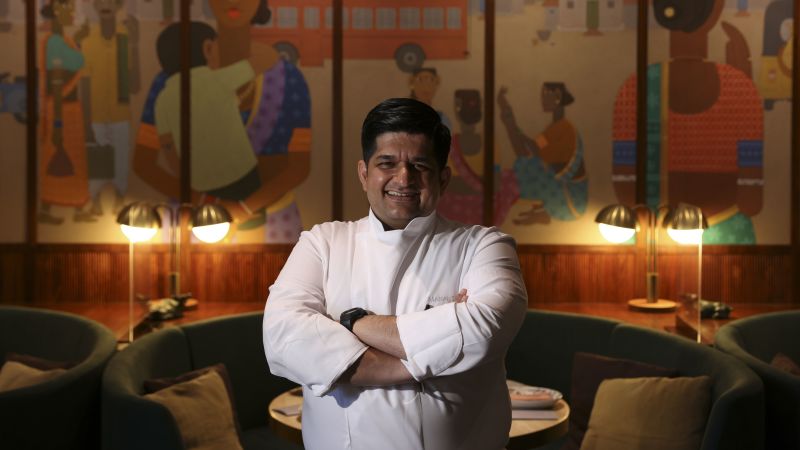
Unique dishes like Tuli’s showstopping tandoori lobster – Indian food with a Hong Kong seafood twist – and a team of knowledgeable staff which communicates the stories of the food beautifully are some of the reasons Chaat is one of Hong Kong’s hardest to book restaurants.
Tables are released two months in advance and swept up in minutes.
But the biggest star of Chaat is Tuli, considered one of the city’s most beloved culinary figures right now.
“When he arrived two years ago, he didn’t know the landscape or culture of Hong Kong,” said Wu. “He is a quiet person but we align in a certain way as we both have a drive. For him, moving his family to Hong Kong with him, he wants to make this a success. So we have been working very closely since day one on that,” said Wu.
He encouraged Tuli to meet the guests and fellow chefs, joining him at events and meals as the chef built a name for himself.
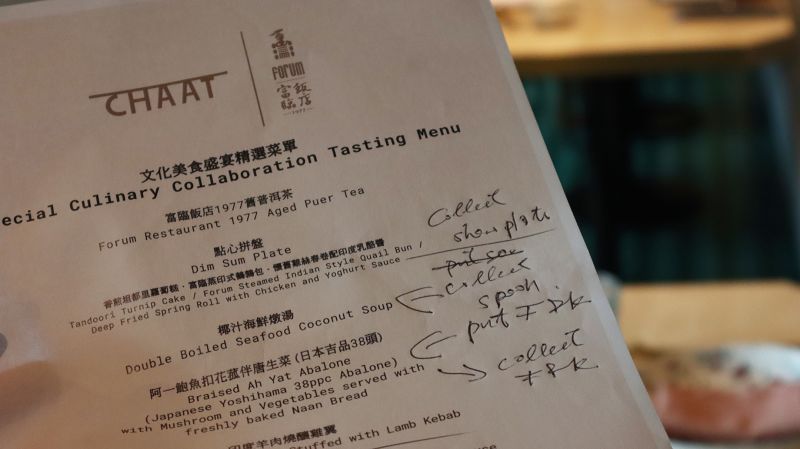
On his days off, Wu organizes lunches for media, including revered industry critics, and chefs he works with or may work with in the future.
These often take place at venues Wu doesn’t work for, from Hop Sze, a no-frills Cantonese diner that has a six-month wait list, to the Forum Restaurant, a Chinese joint with three Michelin stars.
“I worked til 4 a.m [this morning]. I only joined because Geoffrey Wu arranged this lunch,” one food critic tells CNN Travel as he enters the private dining room inside Forum.
The menu of the day includes all kinds of dishes – from street food-style rice rolls to classic Cantonese sweet and sour pork and the restaurant’s famous braised abalone.
As with most lunches with Wu, there’s also an off-menu surprise.
Adam Wong, the executive chef, and CK Poon, the general manager, come in with a pushcart near the end of the meal.
“We are thinking of adding this to the next menu update,” says Poon as he caramelizes sugar for the candied apple fritter (ba si apple), a Northern Chinese-style dessert, on-site.”It’s the first time we’re doing this – so let us know what you think.”
The five-hour lunch wraps up with industry gossip over bottles of cognac.
But Wu is never not working.
He punctuates gatherings with potential collaboration ideas (Tuli and Wong exchanged ideas that day on a hookup between the two restaurants), and fills in moments of silence with jokes to keep the meal entertaining.
“I always say that I’m the chief entertainment officer,” says Wu. “Building relationships takes time. Cold-calling and sending press releases aren’t building a relationship.”
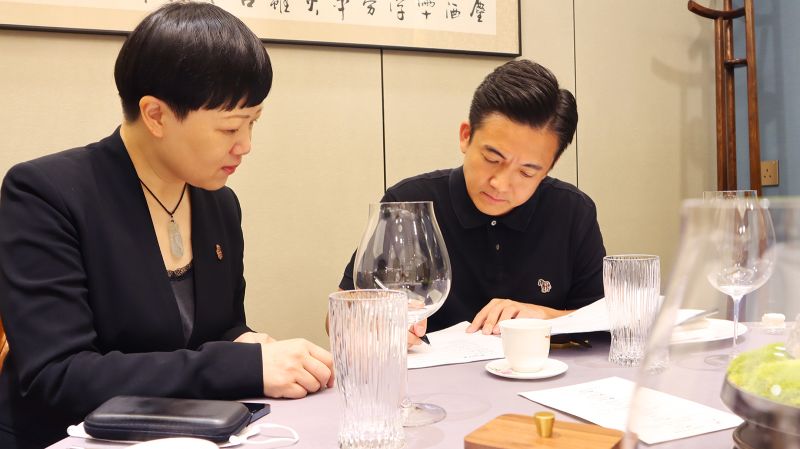
At the end of the day, connections won’t get you far if the food isn’t good or the restaurant refuses to evolve.
“Flavor doesn’t lie,” says Wu. “But everything – restaurants, bars, chefs – has a shelf life. It’s impossible to stay number one forever. You need to keep coming up with new ideas to continue to elevate the restaurant.”
It could be doing more tableside services, educating guests about the dishes, or simply adding a pre-dessert bite that cleanses the palate, he says.
One of Wu’s latest tasks is to edit the menu at one of his new clients, Yong Fu, a Michelin-starred restaurant that specializes in high-end cuisine from China’s east coast Ningbo region.
He’d like to trim down the original one-inch-thick book and has created a tasting menu to offer a more curated ordering experience.
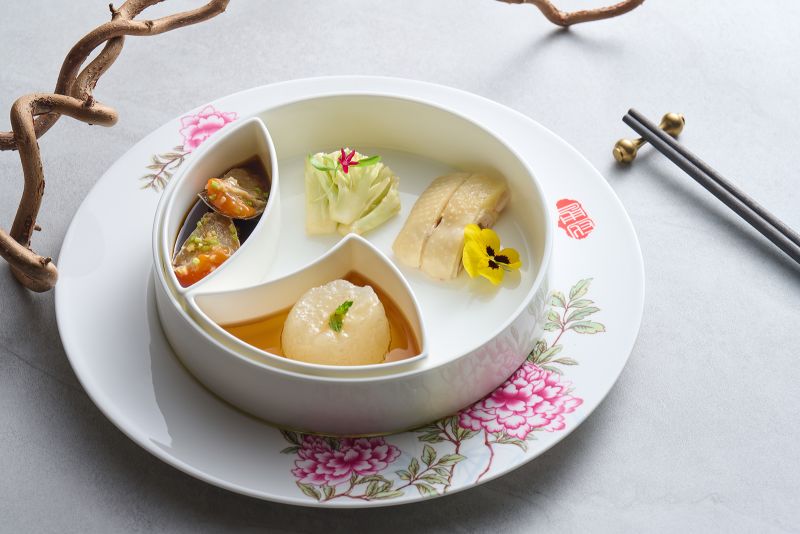
In Hong Kong, Ningbo cuisine is often confused with Shanghai cuisine. The tasting menu includes dishes that diners may not know enough about to order – a “sticky” boiled wax gourd and yellow croaker fish in sour broth, for example – that amplify the trinity of Ningbo cuisine’s star flavors: “savory, umami and sticky.”
Yu Qiong, Yong Fu’s manager, is there to offer an in-depth explanation on each of the dishes.
“These are some of the things that will enrich the whole dining experience,” says Wu. He compares marketing restaurants with running: “Keep refining. Keep pushing. My belief is, just don’t stop until you are at the finishing line.”
It’s an apt metaphor. The avid runner wakes up at 5:45 a.m. on most days to fit in exercise.
“I enjoy Hong Kong on quiet mornings when the city hasn’t woken up yet. When you run, you see a lot of things and think about a lot of things,” says Wu.
As for what was on his mind that particular morning?
“I was thinking about our interview. I was thinking about not swearing. I did well – I only swore once.”
Don't Miss
To tackle Thailand’s mounting trash problem, one company is turning to the country’s plant life. Universal Biopack makes packaging that
CNN — With one of the world’s most diverse food scenes, China makes it nearly impossible to put together one
ATLANTA, Ga. (Atlanta News First) – Thomaston police are investigating after thieves allegedly stole two Ford Mustang cars totaling nearly
Editor’s Note: Monthly Ticket is a CNN Travel series that spotlights some of the most fascinating topics in the travel world. In October, we shift our focus to the offbeat, highlighting everything from (allegedly) haunted spaces to abandoned places.
CNN
—
In March 2022, the world let out a collective gasp when the remarkably preserved shipwreck of Ernest Shackleton’s HMS Endurance was discovered almost two miles beneath the icy Antarctic seas.
But scores more sunken vessels remain on the ocean floor, awaiting rediscovery.
Here are some of the world’s most infamously elusive shipwrecks, plus a few you can see for yourself (some without even getting wet).
A lowly cabin boy shouldered the blame for the sinking of Christopher Columbus’ Santa Maria flagship off the coast of Haiti on Christmas Eve 1492. The inexperienced sailor is said to have taken the wheel after Columbus went for a nap, and shortly after wrote off the ship by crashing it into a coral reef.
That’s one theory, anyway. However the Italian explorer’s ship met its fate, excitement bubbled over in May 2014, when archaeologist Barry Clifford claimed he’d chanced upon its long-lost wreck.
Maritime history buffs’ hearts sank after UNESCO poured cold water on the claim, saying the ship that’d been found was from a much later period.
The Santa Maria is still down there, somewhere.
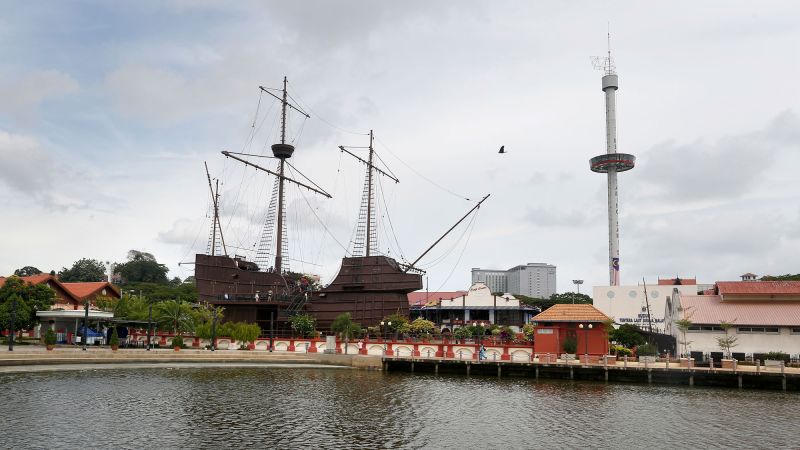
This 16th-century merchant ship – or “carrack” – shuttled between India and its home in Portugal. But given its mammoth size – 118 feet-long and 111-feet-high – it was an unwieldy beast to captain.
Perhaps it was only a matter of time before the Flor de la Mar went down, which it did in a heavy storm off Sumatra, Indonesia in 1511.
Most of the crew perished, and its booty – said to include the entire personal fortune of a Portuguese governor, worth a cool $2.6 billion in today’s money – was lost.
Recently, a fictionalized version of the pirate Zheng Yi Sao went in search of the treasure on an episode of British sci-fi series “Doctor Who,” only to unleash the dreaded Sea Devils.
It may not have its own theme song sung by Celine Dion, but the SS Waratah is known as “Australia’s Titanic” – and for good reason.
A passenger cargo ship built to travel between Europe and Australia with a stopover in Africa, the Waratah disappeared shortly after steaming off from the city of Durban in present-day South Africa in 1909 – just three years before the Titanic tragedy. As for the cause, theories abound.
The entire liner, complete with eight staterooms, music lounge and all 211 passengers and crew, was never found. Ninety years after the Waratah went down, the National Underwater and Marine Agency thought they’d finally found it, but it was a false alarm.
Said the late thriller writer Clive Cussler, who spent much of his life searching for the wreck, “I guess she is going to continue to be elusive a while longer.”
Rotten Tomatoes’ “Tomatometer” might rack up a rancid 17% for the 2016 Nicolas Cage movie, “USS Indianapolis: Men of Courage,” but in real life, the ship played a game-ending role in World War II.
The Indianapolis was chosen to transport the uranium core of the “Little Boy” nuclear bomb to Tinian Island, where the weapon was assembled shortly before being used to devastating effect on Hiroshima.
The drop-off of the deadly cargo went without a hitch, but on its return journey, the Indianapolis was hit by a Japanese sub, with many crew members perishing from shark attacks and salt poisoning.
The exact whereabouts of the warship remained a mystery for decades, but was finally located by a team led by Microsoft co-founder Paul Allen, in 2017 – 18,000 feet below the surface of the Pacific.
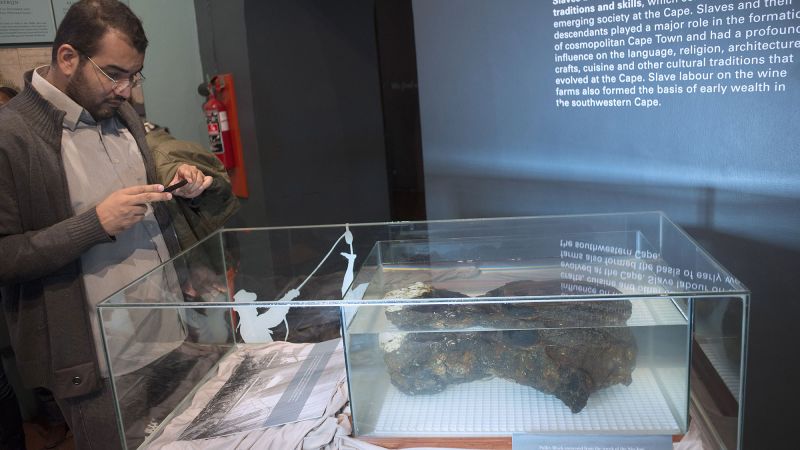
Not just one shipwreck, but an entire ghastly genre of them.
It’s estimated some 1,000 ships now on the bottom of the ocean were complicit in the wicked “triangular trade” across the Atlantic that saw some 12-13 million Africans forced into slavery.
Many of these ships sank in turbulent weather, such as the São José, which went down off the coast of South Africa in 1794.
Others, like the Clotilda, were purposefully scuttled by their owners, to cover up evidence of slave trading, long after the 1807 Act Prohibiting Importation of Slaves.
The wrecks of both these vessels have now been located – the São José thanks to the work of Diving With a Purpose (DWP), a group of largely Black scuba divers who dive on the sites of sunken slave ships, and bring the likes of rusted manacles and iron ballasts to the surface.
It’s impossible to retrieve such objects without also dredging up stories of human suffering, although DWP’s goal is to document slavery’s nefarious legacy, using it to educate and enlighten.
Still, such ships are notoriously elusive, and many may never see the light of day again.
Mehmed Çakir was diving for sponges off the coast of Yalıkavak, Turkey in 1982, when he happened upon the remains of a trading ship that had sunk here some 3,000 years previous.
His was the first of many dives – over 22,400 in fact – to bring up the long-lost treasures of the Uluburun, and what a haul it was; 10 tons of copper ingots; 70,000 glass and faience beads; olive oil and pomegranates stored in Cypriot pottery jars.
Some of the horde can now be seen at the Bodrum Museum of Underwater Archaeology, and while not much of the Bronze Age wreck survives, there’s a cross section reconstruction, which gives a feel for how it would have been stacked with all those goods, all those centuries ago.
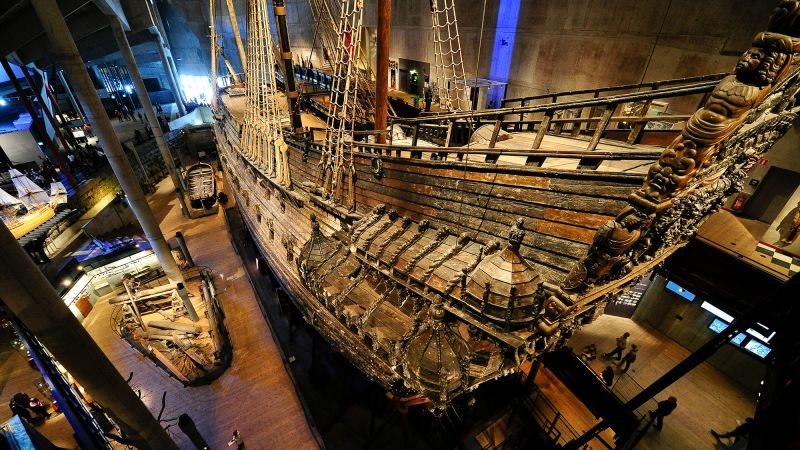
Eerily intact, the 17th century warship Vasa looks more like a prop from the “Pirates of the Caribbean” franchise, than a ship that first (and last) set sail in 1628.
The Swedish behemoth made it about 1,300 meters out of port before it went down, and was only pulled from its silty grave some 333 years later.
A crew of archaeologists (who took typhoid and tetanus jabs to protect themselves from various bacterias) discovered a hull bristling with 700 sculptures and decorations of mermaids, lions and Biblical figures – what has been described as essentially a “gigantic billboard for Sweden and Gustav II Adolf,” the country’s redoubtable king of the time.
Since a dedicated museum opened in Stockholm in 1990, the Vasa has become one of the world’s least elusive shipwrecks, ogled so far by some 25 million visitors.
Spied from the banks of the River Clyde at Greenock in Scotland, you might mistake the wreck of the MV Captayannis for a recently demised whale.
The black hull of this Greek sugar-carrying boat, rolled onto its side, is a favorite perch for feathered residents of a nearby bird sanctuary – and has been, since the ship went down in a squall in January 1974.
It’s said no one took responsibility for the so-called “sugar boat,” hence why it’s still wedged into a sandbank – a gauche reminder of the sea’s capriciousness.
Still, it’s a blessing for local boat charters like Wreckspeditions, who’ll take maritime rubberneckers up close, while pouring them a hot chocolate.
If scuba diving is what floats your boat, chances are you’ve heard of Chuuk Lagoon.
On this sprinkling of islands 1,000 miles northeast of Papua New Guinea, the Japanese set up their most formidable World War II naval base – that is, until Operation Hailstone was launched in 1944, with Allied forces sending some 60 Japanese ships and aircraft to a watery grave.
With most of them still down there, Chuuk Lagoon has become a mawkish subaquatic museum for divers to gawk at barnacled tanks from the San Francisco Maru or the long-abandoned compass and engine telegraphs of the Nippo Maru.
MS World Discoverer, Solomon Islands
“Open 24 hours” declares Google Maps optimistically about the shipwreck of the MS World Discoverer.
Since the cruise ship MS World Discoverer struck something hard, and half-sank off the shores of Roderick Bay in the Solomon Islands in 2000, it’s become a tourist attraction for passing ships (all passengers, it should be pointed out, were helped to safety).
Gently rusting away, at a 46-degree list, the ship looks like it turned on its side, and went to sleep. If nothing else, it’ll have you counting the lifeboats on your own vessel as you sail by.
Don't Miss
CNN — Lewis Hamilton may be Formula One’s most successful driver but after securing a record-equaling seventh world title on
It’s a good day for OPEC. Data published Monday by the oil cartel show its members have largely complied with
ASHFORD, CT (WFSB) – An animal control officer reported that a child was bitten by a raccoon in Ashford. “It
20 best German foods | CNN
CNN
—
German food is rich, hearty and diverse. It’s comfort eating with high-quality, often locally sourced ingredients.
The cuisine of Germany has been shaped not only by the country’s agricultural traditions but by the many immigrants that have made the country home over the centuries.
It’s definitely more than a mere mix of beer, sauerkraut and sausage.
Today Germans appreciate well-prepared, well-served meals as much as they do a quick bite on the go. This is a country of food markets, beer gardens, wine festivals, food museums and high-end restaurants.
So: Haben sie hunger? Are you hungry now? Check out our list of 20 traditional German dishes that you need to try when you travel there.
Named after the former East Prussian capital of Königsberg (now Kaliningrad in Russia), this tasty dish of meatballs in a creamy white sauce with capers is beloved by grandmothers and chefs alike.
The meatballs are traditionally made with minced veal, onion, eggs, anchovies, pepper and other spices. The sauce’s capers and lemon juice give this filling comfort food a surprisingly elegant finish.
In the German Democratic Republic, officials renamed the dish kochklopse (boiled meatballs) to avoid any reference to its namesake, which had been annexed by the Soviet Union. Today it’s possible to find königsberger klopse under their traditional name in most German restaurants, but they are especially popular in Berlin and Brandenburg.

Maultaschen from Swabia, southwestern Germany, are a lot like ravioli but bigger. They are typically palm-sized, square pockets of dough with fillings that run the gamut from savory to sweet and meaty to vegetarian.
A traditional combination is minced meat, bread crumbs, onions and spinach – all seasoned with salt, pepper and parsley. They’re often simmered and served with broth instead of sauce for a tender, creamier treat, but are sometimes pan-fried and buttered for extra richness.
Today you can find maultaschen all over Germany (even frozen in supermarkets) but they’re most common in the south.
Here the delicious dumplings have become so important that in 2009, the European Union recognized Maultaschen as a regional specialty and marked the dish as significant to the cultural heritage of the state of Baden-Württemberg.
Labskaus is not the most visually appealing dish, but a delectable mess that represents the seafaring traditions of northern Germany like no other. In the 18th and 19th centuries, ship provisions were mostly preserved fare, and the pink slop of labskaus was a delicious way of preparing them.
Salted beef, onions, potatoes and pickled beetroot are all mashed up like porridge and served with pickled gherkins and rollmops (see below). It has long been a favorite of Baltic and North Sea sailors.
Today the dish is served all over northern Germany, but especially in Bremen, Kiel and Hamburg. And while on modern ships fridges have been installed, it remains popular as a hangover cure.

There is no Germany without sausages.
There are countless cured, smoked and other varieties available across wurst-loving Germany, so, for this list we will focus on some of the best German street food: bratwurst, or fried sausages.
There are more than 40 varieties of German bratwurst. Fried on a barbecue or in the pan, and then served in a white bread roll with mustard on the go, or with potato salad or sauerkraut as the perfect accompaniment for German beer.
Some of the most common bratwurst are:
– Fränkische bratwurst from Fraconia with marjoram as a characteristic ingredient.
– Nürnberger rostbratwurst that is small in size and mostly comes from the grill.
– Thüringer rostbratwurst from Thuringia, which is quite spicy. Thuringia is also the home of the first German bratwurst museum, which opened in 2006.
The most popular incarnation of bratwurst, however, is the next item on our list.
Practically synonymous with German cuisine since 1945, currywurst is commonly attributed to Herta Heuwer, a Berlin woman who in 1949 managed to obtain ketchup and curry powder from British soldiers, mixed them up and served the result over grilled sausage, instantly creating a German street food classic.
Today boiled and fried sausages are used, and currywurst remains one of the most popular sausage-based street foods in Germany, especially in Berlin, Cologne and the Rhine-Ruhr, where it’s usually served with chips and ketchup or mayonnaise or a bread roll.
Not the most sophisticated of dishes, but a filling street snack born out of necessity about which all of Germany is still mad: some 800 million are consumed a year.
Döner kebab was introduced to Germany by Turkish immigrant workers coming here in the 1960s and ’70s. One of the earliest street sellers was Kadir Nurman, who started offering döner kebab sandwiches at West Berlin’s Zoo Station in 1972, from the where the dish first took both West and East Berlin by storm and then the rest of Germany.
From its humble Berlin beginnings when a döner kebab only contained meat, onions and a bit of salad, it developed into a dish with abundant salad, vegetables (sometimes grilled), and a selection of sauces from which to choose.
Veal and chicken spits are widely used as is the ever-popular lamb, while vegetarian and vegan versions are becoming increasingly common.

Some might argue that schnitzel is Austrian and not German, but its origins are actually Italian.
This controversy hasn’t stopped the breaded and fried meat cutlets to become popular everywhere in Germany, however. While the Austrian or Vienna schnitzel is by law only made with veal, the German version is made with tenderized pork or turkey and has become a staple of most traditional restaurants.
Whereas Vienna schnitzel is served plain, Germans love to ladle a variety of sauces over their schnitzel. Jägerschnitzel comes with mushroom sauce, zigeunerschnitzel with bell pepper sauce and rahmschnitzel is served with a creamy sauce.
All go well with fried potatoes and cold lager or a Franconian apple wine.
Spätzle originally come from Baden-Württemberg. Essentially a sort of pasta, the noodles are a simple combination of eggs, flour, salt and often a splash of fizzy water to fluff up the dough. Traditionally served as a side to meat dishes or dropped into soups, it can be spiced up by adding cheese: the käsespätzle variant is an extremely popular dish in southern Germany, especially Swabia, Bavaria and the Allgäu region.
Hot spätzle and grated granular cheese are layered alternately and are finally decorated with fried onions. After adding each layer, the käsespätzle will be put into the oven to avoid cooling off and to ensure melting of cheese. Käsespätzle is a popular menu item in beer gardens in summer and cozy Munich pubs in winter.
Rouladen is a delicious blend of bacon, onions, mustard and pickles wrapped together in sliced beef or veal. Vegetarian and other meat options are also now widely available but the real deal is rinderrouladen (beef rouladen), a popular dish in western Germany and the Rhine region.
This is a staple of family dinners and special occasions. They are usually served with potato dumplings, mashed potatoes and pickled red cabbage. A red wine gravy is an absolute requirement to round off the dish.
Sauerbraten is regarded as one Germany’s national dishes and there are several regional variations in Franconia, Thuringia, Rhineland, Saarland, Silesia and Swabia.
This pot roast takes quite a while to prepare, but the results, often served as Sunday family dinner, are truly worth the work. Sauerbraten (literally “sour roast”) is traditionally prepared with horse meat, but these days beef and venison are increasingly used.
Before cooking, the meat is marinated for several days in a mixture of red wine vinegar, herbs and spices. Drowned in a dark gravy made with beetroot sugar sauce and rye bread to balance the sour taste of the vinegar, sauerbraten is then traditionally served with red cabbage, potato dumplings or boiled potatoes.
This is another messy and not necessarily optically appealing dish, but nevertheless definitely worth trying. Himmel und erde, or himmel un ääd in Cologne (both mean “Heaven and Earth”) is popular in the Rhineland, Westphalia and Lower Saxony. The dish consists of black pudding, fried onions and mashed potatoes with apple sauce.
It has been around since the 18th century, and these days is a beloved staple of the many Kölsch breweries and beer halls in Cologne, where it goes perfectly well with a glass or three of the popular beer.
Germany’s most beautiful places
Zwiebelkuchen and federweisser
October is the month to taste the first wines of the year in Germany, and a well-known culinary treat in the south is federweisser und zwiebelkuchen (partially fermented young white wine and onion tart).
Federweisser literally means “feather white” and is made by adding yeast to grapes, allowing fermentation to proceed rapidly. Once the alcohol level reaches 4%, federweisser is sold. It is mostly enjoyed near where it is produced. Because of the fast fermentation, it needs to be consumed within a couple days of being bottled. In addition, the high levels of carbonation means that it cannot be bottled and transported in airtight containers.
In most towns and cities along the Mosel River, people flock to marketplaces and wine gardens in early October to sip a glass of federweisser and feast crispy, freshly made onion tarts called zwiebelkuchen. Because of its light and sweet taste, it pairs well with the savory, warm onion cake.
World politics in a pig’s stomach. Saumagen was made famous by former Chancellor of Germany Helmut Kohl, who (like the dish) hailed from the western Palatinate region. Kohl loved saumagen and served it to visiting dignitaries including 1980s British Prime Minister Margaret Thatcher, Soviet leader Mikhail Gorbachev and US Presidents Ronald Reagan and Bill Clinton.
The literal translation of this dish is “sow’s stomach,” but saumagen is a lot less curious than its name implies.
Somewhat resembling Scottish haggis, it is prepared by using the stomach of a pig (or an artificial one) as a casing for the stuffing made from pork, potatoes, carrots, onions, marjoram, nutmeg and white pepper.
It is then sliced and pan-fried or roasted in the oven, and, as Kohl knew, goes down perfectly well with sauerkraut, mashed potatoes and a dry white wine from the Palatinate.
Pinkel mit grünkohl, or cooked kale and sausage, is a delicious winter comfort food eaten mainly in northwest Germany, especially the region around Oldenburg, Bremen and Osnabrück as well as East Frisia and Friesland.
The cooked kale is mixed with mustard and bacon, and the “pinkel” sausage (named after the pinky) is made of bacon, groats of oats or barley, beef suet, pig lard, onions, and salt and pepper.
Germans sometimes celebrate winter with a traditional so-called “Grünkohlfahrt,” where family and friends go on a brisk hike accompanied by schnapps and finished off with a warm kale dinner in a country inn.
Germans are mad about white asparagus. As soon as harvest time arrives around mid-April, asparagus dishes appear on the menus of restaurants all over Germany, from Flensburg to Munich and Aachen to Frankfurt.
This is spargelzeit, the time of the asparagus, and it is celebrated with passion. During spargelzeit, the average German eats asparagus at least once a day. This adds up to a national total of over 70,000 tons of asparagus consumed per year.
No one can truly say where this fixation with white asparagus comes from, but the first document that mentions the cultivation of this vegetable around the city of Stuttgart dates to the 1686. There are spargel festivals, a spargel route in Baden-Württemberg and countless stalls along the roads of Germany selling the “white gold.”
In restaurants, asparagus is boiled or steamed and served with hollandaise sauce, melted butter or olive oil. It comes wrapped in bacon or heaped upon schnitzel; as asparagus soup, fried asparagus, pancakes with herbs and asparagus, asparagus with scrambled eggs or asparagus with young potatoes. There is an audible sigh all over Germany when spargelzeit ends on June 24, St. John the Baptist Day.
Fried potato pancakes are so popular in Germany that we have more than 40 names for them. They are known as reibekuchen, kartoffelpuffer, reibeplätzchen, reiberdatschi, grumbeerpannekuche and so on and so on.
Another quintessential German comfort and street food, reibekuchen are often served with apple sauce, on black pumpernickel rye bread or with treacle (a type of syrup).
They’re popular all year around: in Cologne and the Rhineland they are beloved of revelers during the Karneval festivities in spring, and all German Christmas markets have reibekuchen vendors where hundreds of litres of potato dough are being processed every day during the holiday season.
Why Germany is the bread capital of the world
Rollmöpse (plural) are cooked or fried and then pickled herring fillets, rolled around a savory filling like a pickled gherkin or green olive with pimento, and have been served on the coasts since medieval times.
Becoming popular during the early 19th century when the long-range train network allowed pickled food to be transported, Rollmöpse have been a staple snack on German tables ever since.
Rollmöpse are usually bought ready-to-eat in jars and are eaten straight, without unrolling, or on bread and sometimes with labskaus (see above). And like labskaus, they are commonly served as part of the German katerfrühstück or hangover breakfast.
Germany has a vast variety of cakes, but among the most popular is the Schwarzwälder kirschtorte or Black Forest gateau.
The cake is not named after the Black Forest mountain range in southwestern Germany, but the specialty liquor of that region, Schwarzwälder kirsch, distilled from tart cherries.
Allegedly created by Josef Keller in 1915 at Café Agner in Bonn in the Rhineland, it typically consists of several layers of chocolate sponge cake sandwiched with whipped cream and sour cherries, and then drizzled with kirschwasser. It is decorated with additional whipped cream, maraschino cherries and chocolate shavings.
Its popularity in Germany grew quickly and steadily after World War II, and it’s during this period that the kirschtorte starts appearing in other countries too, particularly on the British Isles.
Whatever the reason for its success, it is both perfect for kaffee und kuchen in a German cafe on a Sunday afternoon as well as dessert.
There are rarely any strawberries in German cheesecake (or any other fruits for that matter), and the base is surely not made from crackers but freshly made dough (or even without base, like in the East Prussian version).
The filling is made with low-fat quark instead of cream cheese and egg foam is added to give it more fluff, plus lemon and vanilla for some extra freshness.
Maybe this purity and the focus on a handful of ingredients is why a version of cheesecake exits in almost every region of Germany: there’s käsekuchen, quarkkuchen, matzkuchen and even topfenkuchen in Austria.
Wherever you try it, you can be sure that it is the perfect treat with some added fresh cream and a hot cup of coffee.
This dessert is another immigrant legacy and is popular with German children.
Spaghettieis is an ice cream dish made to look like a plate of spaghetti. Vanilla ice cream is pressed through a modified noodle press or potato ricer, giving it the appearance of spaghetti. It is then placed over whipped cream and topped with strawberry sauce representing the tomato sauce and white chocolate shavings for the Parmesan.
Besides the usual dish with strawberry sauce, there are also variations with dark chocolate ice cream and nuts available, resembling spaghetti carbonara instead of spaghetti bolognese.
Spaghetti ice cream was invented in 1969 by Dario Fontanella, son of an ice cream-making Italian immigrant in Mannheim, Germany. Thankfully for us and perhaps unfortunately for Dario, he didn’t patent his spaghetti ice cream and it is today available at almost every ice cream parlor anywhere in Germany.
Dario did, however, receive the “Bloomaulorden,” a medal bestowed by the city of Mannheim, for his culinary services in 2014.
Don't Miss
CNN — With one of the world’s most diverse food scenes, China makes it nearly impossible to put together one
‘It felt electric from the time we took the field’: Tom Brady speaks about first NFL game in Germany Tom
Best Chinese food: 32 must-try dishes
CNN
—
With one of the world’s most diverse food scenes, China makes it nearly impossible to put together one single list that truly encompasses the “best” Chinese dishes.
But with such a huge variety of flavors on offer, it’s immensely helpful to go into the country with an introductory list of essential eats that will give you a well-rounded culinary experience.
Below are some of the can’t-miss dishes.
We have included both English and Chinese (Mandarin or Cantonese, depending how they are more commonly known) names in this story.
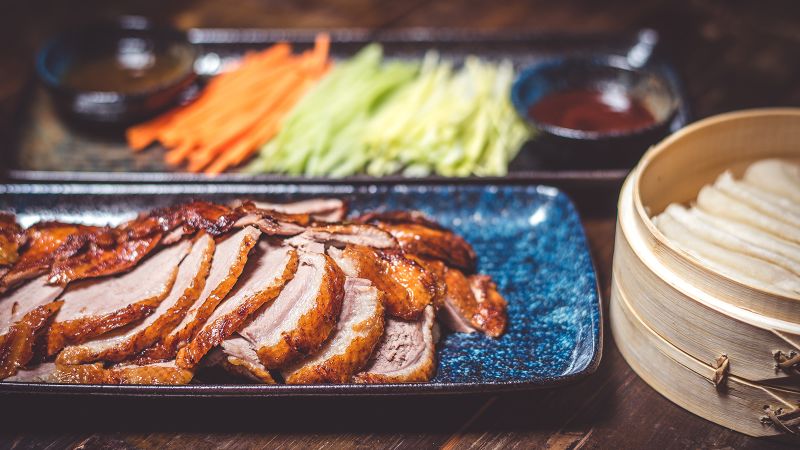
One bite into this small mountain of crispy duck skin, juicy meat, radish, cucumber, scallion and sweet bean sauce wrapped neatly in a thin pancake, and you’ll understand why Peking duck has been captivating stomachs – including those of ancient Chinese emperors – for centuries.
It’s said that roasted duck first started tantalizing taste buds more than 1,500 years ago in Nanjing, when the city was the seat of ancient Chinese imperial regimes.
The capital relocated to Beijing in the 1400s, and the imperial families brought those tasty roast duck recipes – and the chefs – with them.
It was there that the current way we enjoy the duck, wrapped in that delicate thin pancake, was invented and then popularized around the world.

Many Nanjing residents will indeed tell you it’s their city – not Beijing – that’s the true duck capital of China.
The city’s obsession with the bird is evident in its wide array of duck offerings, including salted duck, pancakes made with duck grease and duck dumplings.
But nothing speaks to a duck lover’s heart quite like a cheap bowl of vermicelli soup with duck blood.
Made with duck-bone broth, duck blood curds and bits of duck offal, such as liver and gizzards, this street food dish fully utilizes every part of the bird to deliver incredibly intense flavors.
It may look simple, but steaming fish is a difficult art to master.
Timing is crucial. The number of minutes – or seconds – you should steam a fish is dictated by the type and size of a fish, as well as the strength of your own stove.
Undercook it by a minute, the flesh won’t detach from the bone; overcook it, the flesh will tighten too much and the fish will lose some of its moisture, tenderness and flakiness.
Cantonese steamed fish is usually served in some sweetened soy sauce and scallions.
It’s nearly impossible to dislike China’s soul-comforting dan dan mian, or dan dan noodles. The question is: Which version to try?
Dan dan noodles are named after the way they were originally sold more than 100 years ago – on a dan dan, a carrying pole, by street hawkers.
There are many ways to serve this famous Sichuan specialty. Some think dan dan noodles should contain a dry mix of noodles, made with minced meat, chopped scallions, spices, crushed peanuts and various sauces. Others disagree, preferring dan dan noodles in a hot, spicy, salty and nutty broth albeit with similar ingredients.
But most people would agree that dan dan noodles taste better when topped with a handful of rou saozi – finely chopped pork that’s been pan-fried in lard until golden brown and crispy.

Cuisine in the mountainous, landlocked southern province of Hunan (also known as Xiang cuisine) is often cooked with a generous portion of oil, salt and chili.
The province even has its own chili-themed folk song, with lyrics proclaiming that “it doesn’t count as a dish if there is no chili. A touch of chili triumphs over an exquisite meal.”
No other dish represents Hunan cuisine as well as steamed fish heads served with chopped salted chili (duo jiao yu tou).
Duo jiao, a staple relish in Hunanese homes, is made with chili peppers that are dried, diced then preserved in a jar of salt, ginger, garlic and baijiu (Chinese liquor) for at least a week.
The thick blanket of duo jiao gives the steamed fish head a salty and spicy kick. The leftover juice is a delicious dip for noodles or dumplings after you’ve devoured the fish.
Warning: Once you’ve tried a Cantonese-style, woodfire oven-roasted goose, there’s no going back. No other goose dish will please your palate in quite the same way.
Upon hitting your mouth, the goose magically falls apart, offering an explosion of combined flavors from the crispy skin, melted fat and tender meat.
Some restaurants will use special types of wood, such as camphor wood or lychee wood, to give the bird a special smoky taste.
Seaside Chaozhou is known for no-frills seafood dishes that serve one purpose – to maximize the fresh ingredients’ original umami flavors.
Among the best dishes showcasing this style is Chaozhou-style cold fish or cold crab.
To preserve the freshness of the seafood, fish and crabs are lightly seasoned in salt before they’re steamed. They’re then cooled and served at room temperature.
The fish is often dipped in a special soy bean paste from Poling, while the crabs are served with a garlic and vinegar sauce.
Legend has it that cross-the-bridge rice noodles were invented many years ago by a loving wife. Her husband studied on an island, so the wife would travel across a bridge to deliver him his daily lunches.
As the food would be cold after the journey, the disheartened wife decided to bring a pot of scalding hot chicken broth, along with the rice noodles and raw ingredients.
It was an ingenious plan, really. The chicken oil on the surface of the soup would keep the liquid warm. When the husband was ready to eat, she’d cook all the ingredients by pouring them into the hot soup.
Today, many noodle shops offer their own style of cross-the-bridge rice noodles, offering a choice of different ingredients and soup bases.

One of the most internationally famous Chinese dishes, Kungpao chicken is made by stir-frying diced chicken pieces with scallions, ginger, peppercorns, chili and deep-fried peanuts.
There are different origin stories, but many believe the dish was inspired by a former Sichuan governor in the 1800s called Ding Baozeng, whose nickname was Ding Gongbao – alternatively romanized as Kungpao.
It’s said that Ding loved a sour and salty fried chicken dish from China’s Shandong province. After he was relocated to Sichuan, he asked his chef to add some local chili and peanuts to the dish – and the rest is history.
Sweet and sour pork / Lychee pork
Deep-fried pork can feel a bit heavy, especially in unforgiving summer weather. Thankfully, we have sweet and sour pork.
The pineapple in the dish and a sauce made with sugar, vinegar and soy sauce add some freshness to the crispy pork.
If you’re a fan of sweet and sour pork, you should also try the Fujian version of the dish – lychee pork. By incising the surfaces of the pork pieces, they resemble lychees’ uneven skins after being deep-fried.
There is no lychee in the dish traditionally – the sweetness comes from sugar, but some restaurants add lychee or use lychee sauce to match its name.
Bonus: The rugged surfaces on the pork hold more sauce and have a more tender texture.
Who needs French fries when you have dumplings?
Whether you love them steamed, boiled or pan-fried, jiaozi pack a full punch of carbs, proteins and vegetables in one mouthful.
Vinegar and chili oil are some of the best condiments to go with Chinese dumplings.
One of the most interesting styles of dumplings is Fujian’s rouyan version – delicious enough to earn their own spot on this list.
The mini pork dumplings have an extra chewiness to them as their wrappers are made of pork and some flour.
While Hainanese chicken rice isn’t actually from China’s Hainan province (it was first served in Malaysia), the dish was inspired by the tropical island province and its famous Wenchang chicken.
Made with a special breed of poultry from the island’s eponymous city, Wenchang chicken is prized for its thin skin, tender meat and sweet flavor.
The most common way to cook a Wenchang chicken is by blanching and air drying it. Similar to Hainanese chicken rice, the Wenchang version is often served with yellow chicken fat rice and chicken soup.
Hainan locals usually prefer garlic and ginger paste, chili sauce and the juice of small tangerines as condiments.
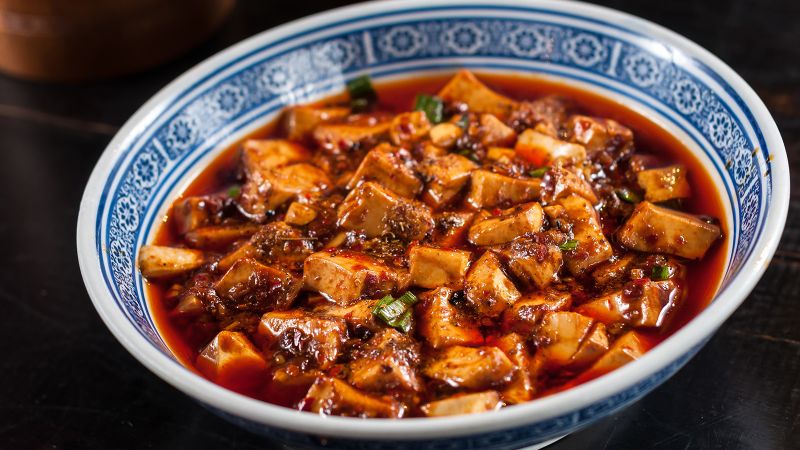
A memorable mapo tofu packs a boatload of zing – salty, peppery and spicy flavors should all hit the taste buds in a single spoonful thanks to the different types of spices, peppers and chili used in the dish.
Discerning local gourmets insist that the best mapo tofu should be made with Hanyuan peppercorns and broad bean chili paste from Sichuan’s Pidu district.
It’s most commonly cooked with minced pork or beef – and tofu, of course. But as the Sichuan dish is so wildly popular nowadays, restaurants often serve creative versions of mapo tofu with different types of meats.
Tender, well-braised pork belly is naturally irresistible – but the star of this Hakka dish is actually mei cai, a dry, pickled Chinese mustard that gives the hearty stew its sour and salty taste.
It’s said that every Hakka family, a traditionally nomadic tribe in China, pickle their own mei cai.
When they make too much of it, they will whip up a mei cai relish that’s a great topping for plain rice and noodles.
Whether it’s an elevated version made with diced abalone and truffles, or a leftover medley of soon-to-spoil ingredients from your fridge, every good version of classic fried rice shares two important ingredients – dry but succulent rice and wok hei (also known as the breath of the wok).
One of the most welcome sights on a cold morning in Tianjin in northern coastal China is a jian bing stand, with its sizzling hot pan.
Jian bing guozi is composed of two elements: Jian bing (crepes) and guozi (deep-fried crisps).
To make a jian bing guozi, first, a mung bean mixture is fanned out with a ladle onto a flat-iron pan. Eggs and scallions are then spread out on the crepe.
After the pancake is flipped over, a dollop of bean paste, sheets of guozi crisps (or, sometimes, deep-fried breadsticks and vegetables) are added before the vendor – usually an elderly man – folds the stuffed and toasted pancake and hands it to you in a paper bag.
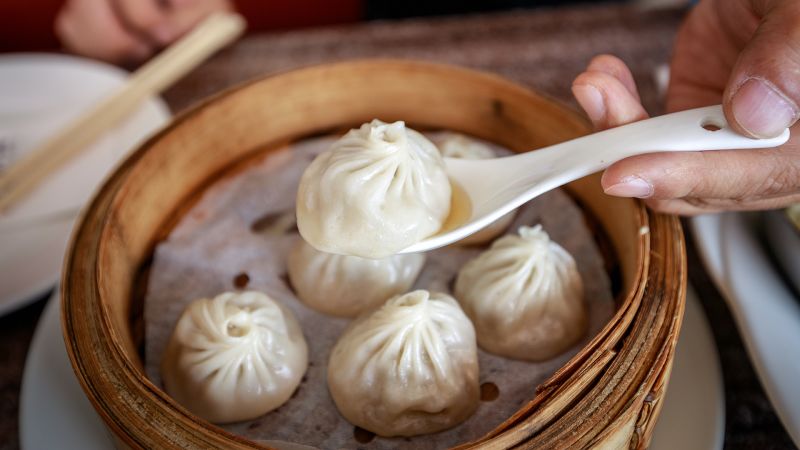
Wondering whether the xiaolongbao wrapper will break on the long journey between the steaming basket and your mouth is one of the most suspenseful moments that can take place at a dining table.
Amassing a huge following in and outside China, xiaolongbao, also called xiaolong tangbao (translated as “small basket soup bun”), is a mix of soup and pork packed inside a thin dumpling wrapper.
In addition to pork, the soupy dumplings can also be filled with crab meat and crab roe.
If you’re one of those people who thinks the real star of beef chow fun is the noodles and not the beef, you should try Chen cun fen (Chen village flat rice noodles).
Chewier, wider and thinner than the usual flat rice noodles, Chen cun fen is a specialty from Chen village, a town in Shunde district in the Pearl River Delta.
In addition to being stir-fried in a noodle dish, the semi-translucent and smooth Chen cun fen make a great base layer for dishes such as steamed spareribs and seafood as the noodles absorb all the flavors from the other ingredients.
Named after famous poet, painter and statesman Su Dongpo (who lived about 1,000 years ago), Dongpo rou is made up of braised pork belly, rock sugar, soy sauce, yellow wine and other seasonings.
The result is a richly flavored and extremely tender pork slab that can easily be pried apart with chopsticks.
It’s a delicious dish that goes well with steamed white rice.
Hot and sour soup
Surprisingly, China’s famed hot and sour soup isn’t just great at warming up your body in winter.
Local Sichuanese believe that the soup can also expel excessive humidity and hotness from one’s body in summer as well.
A bowl of hot and sour soup should have a balance of sourness (from vinegar) and spiciness (from peppers) – but not hotness from chili.
Shreds of tofu, Chinese mushrooms, wood ears and bamboo shoots are some of the common ingredients found in the thick soup.
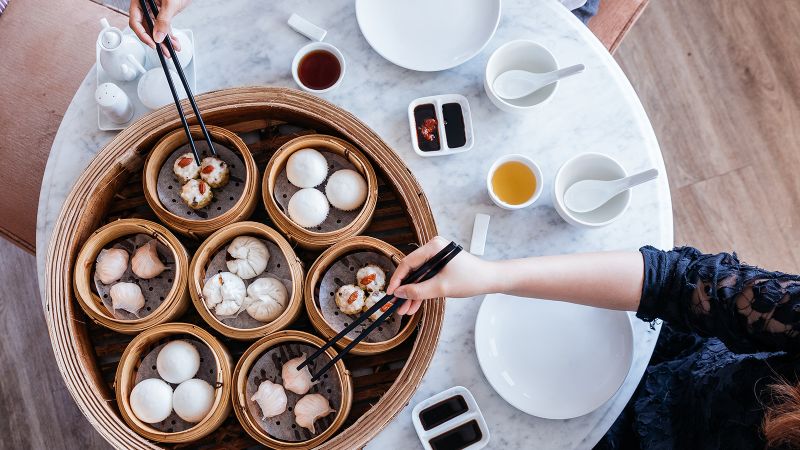
Dim sum refers more to a style of serving food – it’s a type of meal in Cantonese food culture – rather than a specific dish.
It’s a cunning way to include many different varieties of small plates – from pan-fried radish cake to prawn dumplings to siu mai – in one meal.
At the same time, dining on a combination of these dishes during a dim sum session is far more enjoyable than eating just one version on its own.
Don’t be fooled by its bland-sounding Chinese name – shui zhu, which translates literally to “water boil.”
Shui zhu is a cooking technique that was first developed in Sichuan cuisine. The word water (shui) refers to the hot, spicy chili oil broth that is used to poach thinly sliced beef (shui zhu niu), pork (shui zhu roupian) or fish (shui zhu yu).
Today, the photogenic crowd-pleaser is often served with sliced celtuce (a type of lettuce) and flat mung bean noodles in the broth, too.
The best barbecue pork should be slightly charred on the outside and contain just the right amount of sweetness and saltiness from the maltose, wine and soy sauce.
A Cantonese roast shop will let you choose the level of fattiness you want in your char siu, Cantonese for barbecue pork.
Half lean, half fatty char siu is the go-to option if you are a newbie.
Barbecue pork is a highly versatile ingredient served in many delicious dishes – from char siu macaroni soup for breakfast to char siu bao – steamed buns –– at dim sum.
Bao – a steamed bread roll filled with a variety of ingredients including meat or vegetables – come in many shapes and sizes.
It could be a plain bao with a glossy and smooth exterior (mantou), or an oversized steamed volcano-shaped bao stuffed with an entire meal’s worth of food (da bao, or translated as “big bao”).
But one of the best baos is undoubtedly sheng jian bao.
The pan-fried bao is filled with pork and broth, while scallions and white sesame seeds are sprinkled on top.
The Mausoleum of Terracotta Warriors is usually the reason travelers visit Xi’an, but this western Chinese city’s delicious and similarly historical rou jia mo is another great reason to head there.
The ubiquitous street eat consists of a grilled mo (flat bread) and an overflowing amount of shredded pulled pork belly that has been braised in soy sauce, rock sugar and spices such as cinnamon, star anise, cloves and peppercorns for hours.
Undercooked mo is a big no-no. A common saying in Shaanxi province goes “tie quan hu bei juhua xin,” which means “iron ring, tiger’s back and chrysanthemum’s heart ” – the perfect patterns you should look for on a well toasted mo.
Cantonese parents are the real experts when it comes to therapeutic herbal soups, which are simmered for hours to infuse the liquid with healing qualities and deliciousness.
Various seasonal ingredients offer different cooling or warming qualities to restore balance in the body.
For example, apple, snow fungus and lily petal soup will hydrate your body, whereas winter melon and barley soup will cool you down in hot weather.
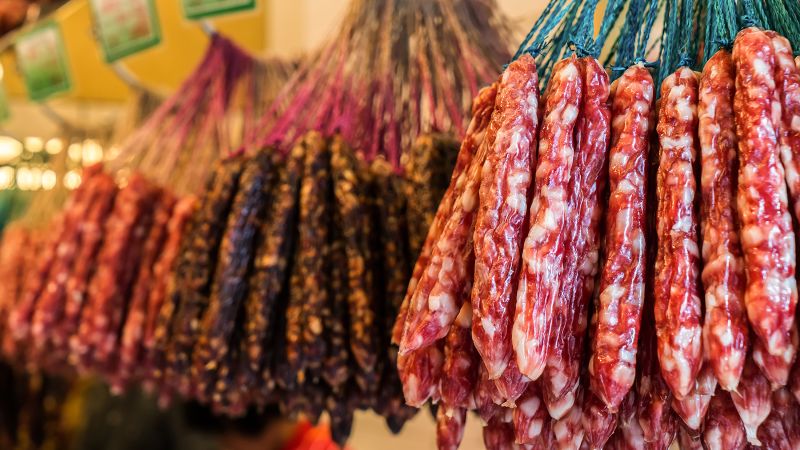
The Chinese version of salami is often categorized into two main types: Laap cheung and yun cheung (in Cantonese).
Laap cheung is preserved meat sausage that has a slightly sweet taste. Yun cheung, on the other hand, is mostly made with offal from poultry, giving it a stronger and gamier flavor.
Unlike their European counterparts, Chinese preserved sausages should be steamed before eaten.
You can find them wrapped in buns, stir-fried with sticky rice or steamed in a clay pot.
The secret to a delicious Fujian-style taro paste is binlang yu, a special breed of yam from Fujian’s Fuding county. The white and purple flesh of a binlang yu has vibrant fragrances and an earthy, nutty and sweet taste.
To make the dessert, the taro is cooked and mashed before it’s mixed with sugar and lard.
The thick, silky taro mash will then be garnished with sweet toppings such as dates, candied cherries and gingko.
When it comes to nourishing your digestive system, in sickness and in health, it’s all about congee (porridge, commonly made with rice).
A popular breakfast item in many parts of China, the versatile cheap eat can be served plain with a drizzle of soy sauce and scallions, or stewed with savory ingredients such as chicken or fish.
Lean pork floss and century egg congee is one of the classics served in the south of China. Congee made with millet instead of rice and flavored with pumpkin is popular in the north.
Those who are extra hungry can order a side of soy sauce-fried noodles, deep-fried breadsticks (youtiao) or soy milk. These can be enjoyed on the side, or you can tear up the breadsticks or add some noodles to the congee.
Most people who visit Chaozhou can’t resist picking up a family-sized bag of super bouncy and flavorsome meat balls made of beef beaten by hand to bring home with them.
Highly praised for their understanding of beef, Chaozhou people are also famous for other dishes such as beef hot pot.
One of the most loved desserts in China, sweet rice balls, or tangyuan, can be found in many regions.
Ningbo is one of the best places to sample these round mochi-like desserts.
The soft, pillowy exterior is made with sticky rice while the filling is made of black sesame, sugar and lard.
The lard gives the filling an extra fragrance and sheen.
Don't Miss
CNN — Hong Kong is widely considered one of the most challenging cities in the world to operate a restaurant
To tackle Thailand’s mounting trash problem, one company is turning to the country’s plant life. Universal Biopack makes packaging that
CNN — German food is rich, hearty and diverse. It’s comfort eating with high-quality, often locally sourced ingredients. The cuisine
Virgin Boeing 747 to launch rocket into space
CNN
—
At the far southwestern tip of England, dangling into the Atlantic, the remote region of Cornwall rarely feels like the center of the world.
But recently locals have been feeling tantalizingly close as they’ve watched a very special plane fly low overhead, taking off from the runway at little Newquay Airport – the 29th biggest airport in the UK – and circling the skies above the coast before touching back down.
This isn’t just any plane. Nor is it a normal Boeing 747, as it appears from the ground. In fact, it’s the “Queen of the Skies” repurposed for the space race, making trial flights before it takes part in the United Kingdom’s first orbital space launch next month. And it’ll be taking off from Spaceport Cornwall, which shares the airport’s 1.7-mile regular runway.
Marc Andrew, from nearby Newquay, traveled to the spaceport after work to see the aircraft land this week.
“It was amazing to watch, and will be a nice bit of history to tell my little boy when he’s older,” he told CNN. He is now preparing to return for the November launch.
Cosmic Girl, as the plane has been named, is the vessel for Virgin Orbit’s bid to launch seven satellites into space.
A former passenger jumbo jet in service with Virgin Atlantic until 2015, it has been modified to carry LauncherOne, a California-made rocket which will go into the Earth’s orbit.
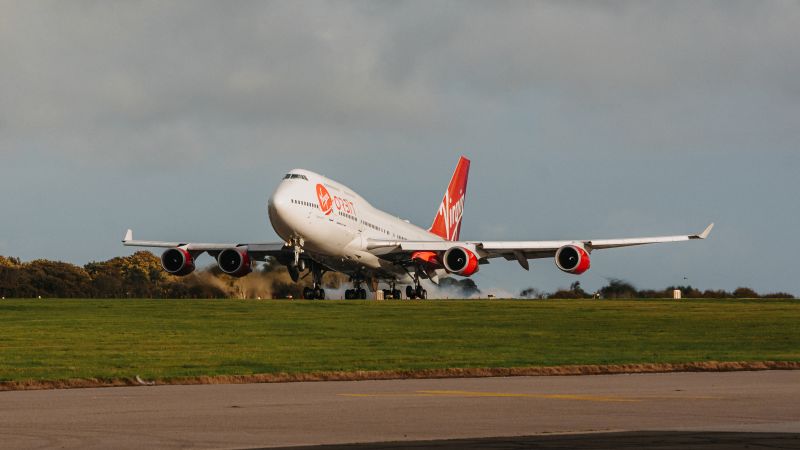
Next month, Cosmic Girl will take off from Newquay’s clifftop runway with LauncherOne under its wing – and once the 747 hits 34,000 feet, it’ll release the rocket.
Inside will be seven payloads, or satellites, which will start circling the planet in low Earth orbit.
A trial last year saw the rocket – released from under the 747’s left wing – traveling at up to 17,000 miles an hour as it zoomed into space.
Using a 747 for a horizontal launch enables a “broader range of orbits than would be possible from a traditional ground-launched system,” Virgin Orbit wrote in a statement.
The event will be the first orbital space launch for the UK and the first international launch for Virgin Orbit, according to the company. It’ll also be Europe’s first satellite launch, according to Ian Annett, deputy CEO at the UK Space Agency.
LauncherOne completed its first full launch rehearsal in Long Beach, California, on October 2, before being flown to the UK last Friday to meet Cosmic Girl, which arrived in Cornwall on October 11.
Cosmic Girl completed a nearly three-hour test flight around Cornwall and Southwest England on October 14, with Cornwall locals noting it flying low over their gardens.

Virgin Orbit’s chief pilot, Matthew Stannard, who will fly the 747 for the launch, said: “It feels amazing to bring Cosmic Girl home to the UK We are weeks away now from the first UK launch at Spaceport Cornwall so it’s all very real.”
Melissa Thorpe, head of Spaceport Cornwall, said: “Seeing the infrastructure in place makes our launch ambitions a reality.”
Hoping to see more Cosmic Girls? Virgin Orbit is planning to bring horizontal launches to Australia, Brazil, Japan, Poland and the Republic of Korea.
Don't Miss
Story highlights Astronauts can temporarily gain 2 inches in height but suffer muscle loss and back pain More countermeasures involving
Turn Your Rising Home Equity Into Cash You Can Use Source link
Story highlights Shane Kimbrough is a NASA astronaut He voted in the 2016 election CNN — From infinity and beyond,
Editor’s Note: All-new episodes of “Stanley Tucci: Searching for Italy” air 9 p.m. ET Sundays only on CNN. Missed a week? Catch up on CNNgo. You can also watch season one on Discovery+.
CNN
—
It’s a place of terraced lemon groves, a paradoxically warm mountain breeze, and a powerful fat-killing gene carried by a few lucky residents.
Limone sul Garda, a picturesque fishing village set on the shores of Lake Garda in Italy’s northern Lombardy region, is an unusual destination of barely 1,000 residents.
It is the most northern spot in the entire world where lemons are naturally grown and has an exceptionally mild climate, considering its location at the feet of the Alps.
Perhaps this mix of factors is what has led to the village’s claims of a secret “elixir” to a healthy, long life.
Many locals are apparently blessed with great digestive abilities that allow them to stuff themselves with cream-filled cakes and greasy cold cuts without worrying about expanding waistlines or heart problems.
These residents have what they call the “Limone gene,” which contains a special protein that destroys lipids and keeps blood fluid.
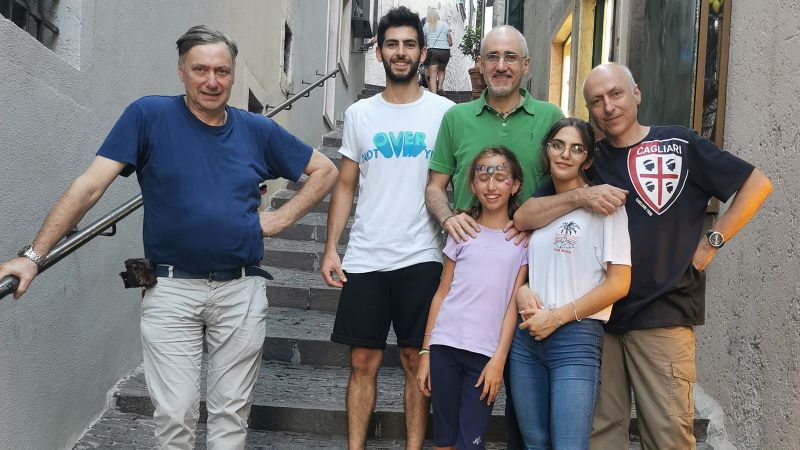
For 40 years, the people of Limone sul Garda have been under scientific observation, with gene-carrying villagers tested as lab rats.
Of the 1,000 residents, half are Limone born and bred; and of those 500, 60 have the gene.
“The gene runs in my family,” says shopkeeper Gianni Segala, who jokes that the villagers are used as “blood bags” for scientists.
“My brothers and I, my mother – who’s 96 and still very bright – and all my children carry it.
“Since the 1980s we’ve been giving away our blood for recurrent tests, we’ve almost been bled out entirely,” he adds wryly.
He recalls the first time the doctors had him swallow a sugary dose of whipped cream every two hours to monitor his bloods.
“They took my blood after each bite, it was so sweet and greasy I felt nauseous, but even though I ate a lot of it my blood instantly destroyed the fats without assimilating them. By nightfall I almost fainted [due to blood loss],” he says.
However, even though people like Segala may never have to fret about clogged veins and blood clots, he says he leads a very normal life and is “no Superman.”
Cesare Sirtori, professor of clinical pharmacology at the Università degli Studi di Milano, leads the team that first identified what Limone locals dub the “elixir” protein, calling it A-1 Milano. He says the people of Limone have exceptionally low HDL cholesterol levels (in a 7-15 range when normally it should be 40-60) which appears to be the result of a genetic mutation within the protein carrier.
“Having low HDL cholesterol – given that it is classed as ‘good’ cholesterol – is bad for you and leads to heart problems such as potential strokes, but in these locals it has an inverse positive effect,” he says.
“And while 99% of protein genetic mutations trigger diseases and pathologies, this one has determined the absence of vascular diseases in carriers.” Sirtori is now studying the Limone gene to see how it could further the fight against atherosclerosis.
In 2000, he and his team lab-synthesized the Limone protein and injected it into rabbits. The animals saw a significant decrease of blood clots in their arteries.
He discovered that in Limone it is a dominant gene, found in the DNA of five-year olds, youths and elderly alike.
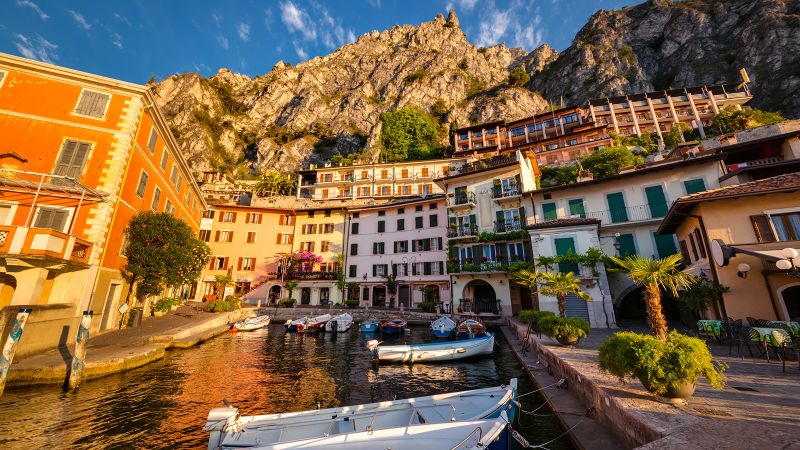
The gene was first identified in the blood of a Limone train driver, an ancestor of Segala, who had been involved in an accident in Milan (hence the protein name A-1 Milano) and was taken to the hospital. Doctors who cured him were baffled by his astounding blood results, and kickstarted a massive screening campaign in the village.
“I was just a kid when my blood was first tested, and the doctors come regularly to monitor how our gene is behaving,” says Giuliano Segala, Gianni’s son.
“The fact that I carry [the gene] gives me a sort of life insurance – I feel more shielded health-wise and confident I won’t have clogged arteries or die of a heart attack when I grow old.”
Even though he does occasionally feel like a guinea pig, Giuliano, who’s slim and fit, admits to happily indulging in greasy cured meats including mortadella, salami and even lard – just like his grandmother, who looks after herself and cooks for the whole family. The younger Segalas inherited the gene from her.
“I never get stomach ache and I eat whatever I feel like. I love cotolette (breaded and fried veal cutlets), fried foods, salamis, and I also love to drink. I sleep like a baby,” says Giuliano. But just because he’s a carrier of this superb gene doesn’t mean he always over-eats. He also exercises regularly, hiking with his father up mountain peaks to enjoy the spectacular views of nearby Lake Garda.
Sirtori is still hoping to analyze what happens if two carriers conceive a child. So far it’s been either the father or mother of a carrier to pass on the gene.
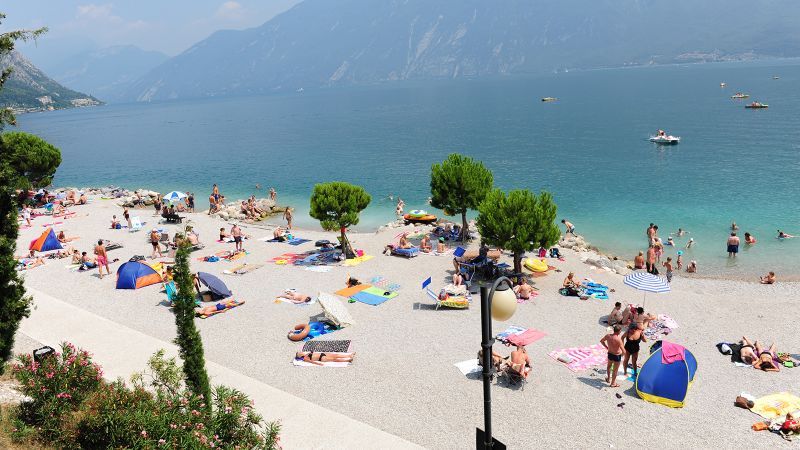
Sirtori says that this genetic mutation, and its associated health benefits, is unique to Limone – and can’t even be found in nearby villages. However, he isn’t interested in digging into why that is.
But others have. Antonio Girardi, a local hotelier who has traced back the entire family tree of the Limone gene transmission to the 18th century, believes the surroundings, climate and natural produce play a key role.
“It can be this warm climate year-round – we never have snow or ice, which is also why lemons have been growing in this northern area here for centuries,” he says.
“Or perhaps it’s thanks to the extraordinary extra virgin olive oil we’re all weaned on, and the fresh lake fish we eat.”
Ever since the Renaissance, wealthy families have flocked to Limone’s shores for vacations, breathing in the sweet Alpine air mixed with citrus fragrances, and benefiting from the climate.
Girardi keeps a phone book with the contacts of all 60-something gene carriers. The other residents are split between those born in Limone and those from from neighboring towns or abroad, lured by the paradisaical setting and sleepy vibe of Limone’s maze of cobbled alleys, and white passageways and dwellings.
In the past villagers were either fishermen or mountain woodcutters who transported logs on donkey to be sold to the ships at the harbor. Today they all work in the tourist sector which draws big money.
Families stroll along the picturesque harbor and tourists visit the fishing museum. The cozy beaches lure sunbathers and sailing amateurs in summer while hikers explore the ragged tall cliffs looming over the lake.
“These mountains act as natural shields protecting us from cold winds and capturing the sun, keeping temperatures constantly warmish,” says Girardi.
“We must thank this very pleasant, extraordinary micro-climate which has gifted our people with such a natural elixir.”
• Sign up to CNN Travel’s free nine-part Unlocking Italy newsletter for insider intel on Italy’s best loved destinations and lesser-known regions to plan your ultimate trip. Plus, we’ll get you in the mood before you go with movie suggestions, reading lists and recipes from Stanley Tucci.
Don't Miss
Editor’s Note: Monthly Ticket is a CNN Travel series that spotlights some of the most fascinating topics in the travel
CNN — Neil Diamond sang “Sweet Caroline” at the Broadway opening of his musical” A Beautiful Noise,” five years after
CNN — Golf fans are accustomed to hearing a curling putt described as ‘snaking.’ What they are less familiar with,
CNN
—
Ritz-Carlton’s highly-anticipated superyacht cruise has finally made its debut, three and a half years after its maiden voyage was originally scheduled to begin.
Evrima, the first of three custom-built yachts from the famous hotel chain’s Ritz-Carlton Yacht Collection, began a seven-night cruise from Barcelona, Spain to Nice, France on October 15.
The 190-meter vessel, which can accommodate 298 passengers, is made up of 149 suites with a private terrace, as well as floor to ceiling windows, and features an infinity pool, a wine vault, a Ritz-Carlton Spa, a nightclub and its very own “marina.”
Rates for a one-week stay start at $6,400 per person for Mediterranean voyages, while Caribbean voyages begin at $5,100 per person, with accommodation options ranging from standard cabins, to two-story “loft-style” apartments, and a sprawling 1,091- square-foot “owner’s suite” with a private hot tub.
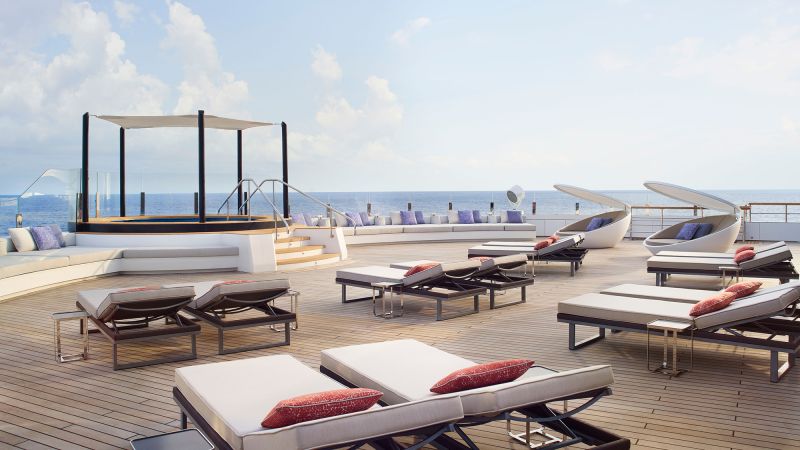
Those who splash out of these luxury cruises can expect “service at a gold standard” – the yacht claims one of the highest staff and space to guest ratios at sea – as well as fine dining experiences, complimentary water sports, and on-board entertainment.
There’s also a dedicated on-board children’s facility with a jam-packed program for those aged from four to 12.
Evrima, which means discovery in Greek, will sail to a range of destinations throughout the Mediterranean, the Caribbean, as well as Central America and South America, with most cruise durations ranging from seven to 10 nights.
The luxury yacht is to be followed by two others, Ilma and Luminara, currently under construction at Chantiers de l’Atlantique shipyard in Saint-Nazaire, France.
Ritz-Carlton first announced plans to move into the luxury yachting world back in 2017, describing the venture as “a hybrid between luxury cruising and yachting.”
“The Ritz-Carlton Yacht Collection is revolutionizing the luxury cruising industry, creating an entirely unique category designed for those in search of unmatched getaways, highly curated itineraries, insider access and a level of personalization previously unseen in the space,” Douglas Prothero, chief executive officer for the Ritz-Carlton Yacht Collection said in a statement.
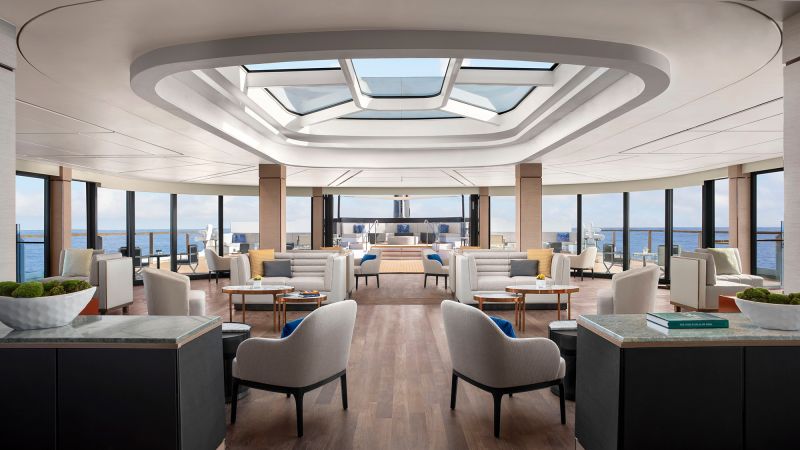
“Every element of the luxury yachting experience was considered when designing and creating Evrima, and we are excited to deliver unforgettable journeys for both longtime cruisers and those who are new to the industry.”
All three of the superyachts will be available for private charter. While Ritz-Carlton have not revealed the charter price, it’s safe to assume that those who opt to hire the vessels out will need pretty deep pockets.
“We are thrilled to introduce The Ritz-Carlton Yacht Collection and usher in an exciting new chapter for this beloved brand,” says Chris Gabaldon, senior vice president for luxury brands at Marriott International.
The launch of Evrima has been rescheduled several times due to supply chain issues and the global pandemic.
Earlier this month, the Four Seasons announced plans for its first vessel, a 14-deck, 207-meter-long superyacht with 95 suites, which is scheduled to enter service in late 2025.
(CNN) — It wasn’t until he moved near to an airfield in the UK over a decade ago that mechanical engineer Ashok Aliseril Thamarakshan began to seriously consider learning to fly a plane.
He got his first taste of flying a few years later, when his wife Abhilasha bought him a 30-minute flight experience for his birthday.
Aliseril, who is based in English county Essex, booked in some flying lessons at a local airfield and flew to the Isle of Wight, an island off the south coast of England, during his first session.
“That was quite an eye opener into how it [flying] gives you the freedom to just go places if you have that ability, and access to an aircraft,” he tells CNN Travel. “So that really got me hooked.”
Aliseril got his private pilot’s license in 2019 and soon began hiring planes for short flights.
Amateur build

Engineer Ashok Aliseril spent 18 months building a four-seater plane during the pandemic, helped by his daughter Tara.
Courtesy Ashok Thamarakshan
But as his family grew — he and Abhilasha now have two daughters, the two-seater planes typically available for private hire became even less suitable, and he began to mull over the idea of buying his own plane.
Aliseril briefly considered buying an older aircraft, and looked at some that had been built in the 1960s and 1970s.
However, he says he felt uneasy about the prospect of flying his family in an older aircraft that he wasn’t familiar with, and didn’t think it would be a “comfortable journey.”
Aliseril began to look into the possibility of building a plane himself, reasoning that this would allow him to gain a better understanding of the aircraft so that it would be easier to maintain in the long term.
After researching self-assembly aircraft kits, he came across a four-seater plane manufactured by South African company Sling Aircraft that ticked all the right boxes.
“This was pre Covid, where travel was still very easy at the time,” he explains. “I ordered the first kit when I got back. And by the time it arrived, the UK was in full lockdown.”
Aliseril says his colleagues, some of whom had experience with building aircraft, initially offered to help with the build. But the restrictions brought about by the Covid-19 pandemic, which had spread across the world by this point, meant that this wasn’t possible.
Home assembly

Aliseril’s home improvement experience came in handy while constructing the four-seater Sling TSi aircraft.
Courtesy Ashok Thamarakshan
Amateur-built airplanes in the UK are investigated by the CAA, who will issue a “Permit to Fly” once satisfied that the aircraft is fit to fly.
Although the start of the build was delayed slightly due to the Covid-19 restrictions in place in the UK at the time — the Light Aircraft Association inspector assigned to the project was required to visit his working space beforehand — Aliseril was able to begin in April 2020.
While he notes that his engineering background helped in some ways, he believes that it was actually his home improvement experience that proved most useful while constructing the aircraft, which has a length of 7.175 meters and a height of 2.45 meters.
“These aircraft kits are designed for any amateur to build, provided you’re a bit hands-on and you’ve got experience working with some specialist tools,” he adds, describing the detailed “Ikea furniture type instructions” with drawings that came with the kit.
“I would say generally, anyone can get involved in these sorts of builds.”
Lockdown project

He built a shed in his garden to complete the build.
Courtesy Ashok Thamarakshan
Aliseril completed the work himself, drafting in Abhilasha to assist with some of the sections that required more than one pair of hands. Their eldest daughter Tara, now seven, was on hand for tasks such as removing the plastic from each of the components.
By the end of summer 2020, Aliseril had built the tail and the wings. He began constructing the fuselage section in October, when the next part of the kit arrived.
Although he’d initially planned to hire a workshop to construct the aircraft, Aliseril feels that creating a workspace at his home was the better choice.
“I could just step into the shed and work on it,” he says. “So having everything just in the back garden really helped, even though space was tight.”
Each stage of the project had to be signed off by an inspector before he could move onto the next task — the Light Aircraft Association completed around 12 inspections in total.
Once the majority of the components were constructed, and it was time to put the aircraft together, Aliseril moved everything from his home to a hangar near Cambridge for the final assembly and engine fit. The aircraft passed its final inspection a few months later.
It was one of the first Sling TSi homebuilt aircraft constructed in the UK. G-Diya, named after his youngest daughter, was signed off for its first flight in January 2022.
Aliseril recalls waiting on the ground anxiously as a test pilot took the plane he’d spent 18 months building up into the air.
Taking flight

The aircrraft, which has a range of 1,389 kilometers, was issued with a permit to fly back in May.
Courtesy Ashok Thamarakshan
“He took it up for about 20 minutes, and then he came back,” he says. “It was a big relief. I couldn’t lift my head up to see what was happening [during the test flight].”
That first flight was hugely significant in many ways.
“With these build projects, everyone calls it a project until it’s first flown,” he explains. “Once it’s flown, it’s always called an aircraft. You never call it a project anymore. That’s psychologically a big step.”
When it was time to fly the aircraft for the first time himself, Aliseril was accompanied by another experienced test pilot.
While he admits to being decidedly cautious, the test pilot was “throwing the aircraft about as if it was a racing car.”
“I was feeling very nervous, I didn’t want to put any extra stress on it,” Aliseril explains. “But he [the test pilot] was really pushing it to the limits. And it was good to experience that. I know that it [the aircraft] can handle this much.
“Once I landed, he [the test pilot] clapped his hands and said ‘Congratulations, you’ve just landed the plane you built.’ That was a great feeling.”
G-Diya, which has a range of 1,389 kilometers, went through a number of further test flights before it was issued with a permit to fly in May 2022.
The following weekend, Aliseril flew with his wife and daughters Diya and Tara, four, to the Isle of Wight, where they took a short taxi ride from the airfield to the beach.
“The kids were really happy,” he says. “So that sort of freedom. And the fact that we could just do that on a Saturday and still be back by 4 p.m. That was a great feeling.”
In June 2022, he took a one-week trip around northern Europe with a pilot friend, and flew to the Czech Republic, Austria and Germany.
While Aliseril stresses that he’s still a relatively new pilot — he currently has around 125 hours of flying hours under his belt — his confidence is growing with every flight and he’s working towards flying to Europe with his family.
Family trips
“That’s the plan going forward,” he says. “We can take trips within the UK on a weekend, when the weather is good. And in the summer holidays, we can book out a week and then fly into Europe.”
For Aliseril, one of the main benefits of the plane, aside from the freedom it provides him and his family, is the friendships he’s formed with other pilots.
He was always mindful that owning an aircraft could become a financial burden, but has been able to get round this by working out an arrangement to share it with three others.
“To get your private license, it costs quite a bit,” he adds, before noting that many of those who’ve taken on similar projects are either retired, or are people “who have the time and financial status” to fund the process.
“I kind of knew that from the beginning, and thought I’d take that risk and try to do it myself,” he says. “I knew that once it was done, I would easily be able to find people to share that cost. And it’s worked out quite well [for me].”
Now that the aircraft is split equally between four people, “it’s only costing us around the price of an SUV,” adds Aliseril.
“It’s more fuel efficient in the air — it only takes about 20 liters of unleaded fuel per hour of flight,” he says. “So the fuel costs are pretty much equal to driving.”
There’s currently no hangar space at the airfields close to his home, so Aliseril is building a new hangar for the plane, which is still based near Cambridge, at an Essex airfield.
As for the cost of the build, the kit was priced at around £80,000 (about $91,000,) according to Aliseril, while added costs including avionics, as well as the plane’s Rotax engine, propeller and other supplies, brought the total up to around £180,000 (around $203,000).
He hopes that more young people will take on projects like this in the future, and points to shared aircraft ownership as a way to make things more cost efficient, as well as form connections in the aviation world.
“It becomes a communal thing,” he says. “You always have somebody to fly with if your family is not available. Also, having other pilots who are friends — you learn from each other.”
Correction: An earlier version of this story mixed up Aliseril’s eldest and youngest daughters. It also misstated the name of the Light Aircraft Association.
Don't Miss
To tackle Thailand’s mounting trash problem, one company is turning to the country’s plant life. Universal Biopack makes packaging that
People walk past the rubble of a market in Wajima, Ishikawa prefecture, on January 2. Kyodo News/Getty Images The death
CNN — Lewis Hamilton may be Formula One’s most successful driver but after securing a record-equaling seventh world title on

